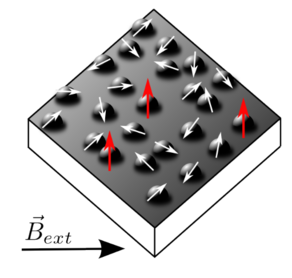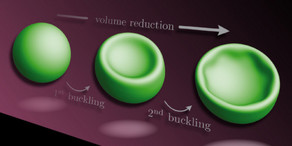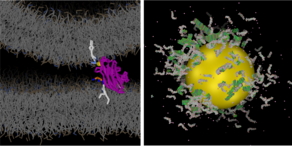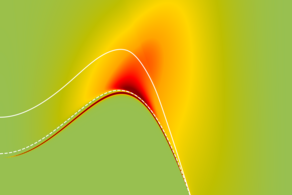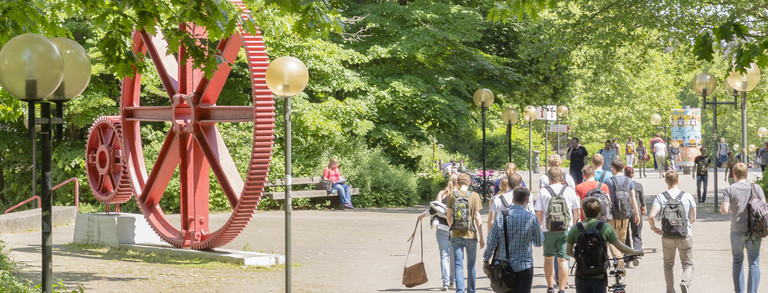Research Topics
Soft condensed matter and biological physics
Research focuses on the statistical physics of soft matter or biological systems, which is research at the interface of biology, chemical physics, condensed/soft matter physics, and materials science. The subjects cover a wide range of fluctuating equilibrium and driven systems, which are treated using analytical and numerical methods from statisical mechanics, stochastic dynamics, elasticity theory, and hydrodynamics.
One main area of current research are semiflexible polymers and cytoskeletal filaments where we investigate the physics from the single polymer level up to the level of biological structures consisting of assemblies of interacting filaments and from thermal equilibrium properties to filaments which are chemically driven by polymerization or by molecular motors. This requires exploring the interplay of thermal fluctuations, external forces, interactions, and active fluctuations.
A topic of particular interest is the polymerization kinetics and force generation of microtubules and actin, which is biochemically driven by hydrolysis of ATP or GTP.
Another main area of current research are elastic capsules, where we work on shape analysis and elastic instabilities, i.e., buckling and wrinkling. We also explore the use of elastic capsules as microswimmers.
Current research topics
Our current research topics include:
- Semiflexible polymers and cytoskeletal filaments
- Polymerization kinetics and force generation of microtubules and actin
- Coupling of hydrolysis and polymerization
- Chemomechanical models of microtubule dynamics
- Microtubule dynamics in the mitotic spindle
- Adsorption, unbinding, desorption of semiflexible polymers
- Localization in random potentials
- Self-assembly of filament bundles
- Buckling instabilities of filaments
- Single polymer manipulation: stretching, unzipping, force-induced desorption, activated dynamics on structured surfaces
- Active filament systems
- Gliding assays, interaction of filaments and molecular motors
- Growing bundles, force generation in the cytoskeleton
- Elastic shells, capsules, and polymer networks Modelling of elastic capsules
- Elastic instabilities: wrinkling and buckling
- Elastometry of capsules: determination of elastic moduli from shape and wrinkling analysis
- Actuation of capsules by magnetic fields, hydrodynamics flows, at liquid-liquid interfaces
- Elastic properties of semiflexible polymer networks
- Elastic capsules as microswimmers (within DFG Priority Programm SPP 1726)
- Novel event-chain cluster Monte-Carlo algorithms for soft matter
- Many-particle interactions
- Large scale polymer simulations
- Liquid crystal and colloid simulations
- Wetting and droplet morphologies
- Machine learning in pendant drop tensiometry
- Wetting on structured substrates
- Line tension effects
- Crack propagation
- Crack (non-)propagation in disordered/heterogeneous materials
Past research topics
Our past research topics include:
- Vortex matter in type-II/high-Tc superconductors
- Phase diagram of high-Tc superconductors
- Equilibrium description of vortex phases: Lattice/Crystal, Glass, Liquid
- Phase transitions: Melting, Amorphization
- Plastic properties, toplogical defects in the vortex lattice
- Glassy dynamics (creep)
- Topological defects, Plasticity
- Stat mech of (disordered) systems containing topological defects
- 2D XY models in random fields
- Defect-mediated melting
- Dislocation dynamics
- Surface Growth
- Surface reconstruction and quenched disorder

